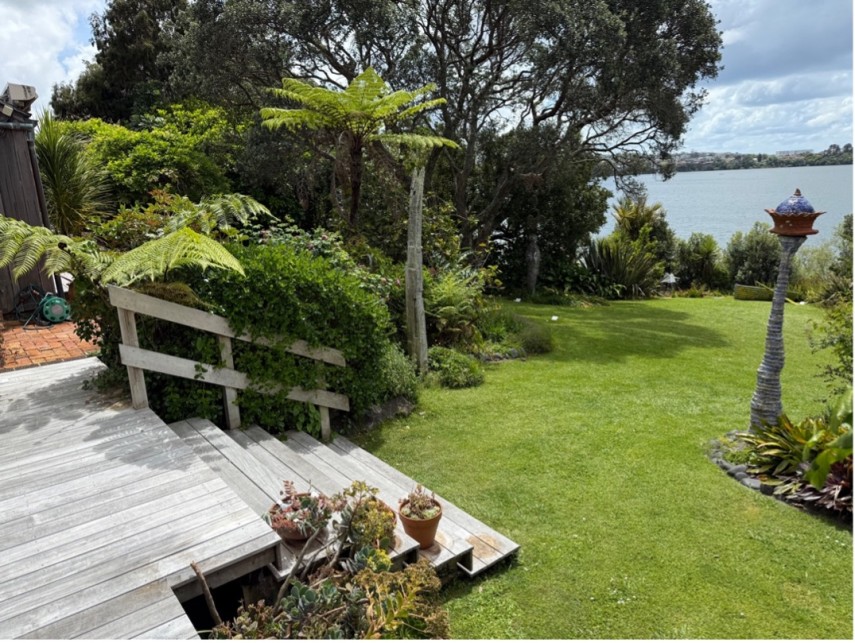Becroft’s Residence Open Home Visit

Certain power couples are among the movers and shakers that influence the rest of us and, to a varying degree, shape our lives and views.
One such couple, David and Genevieve Becroft had a home and garden constructed on the benign shores of Lake Pupuke, Takapuna Auckland. The newly married couple spent time in the USA in the 1950s and returned home determined to break the mould of post-war austerity and narrow cultural expressions. Together they spent their lifetime manifesting an artful patronage across architecture, landscape design, sculpture, painting and ceramics.
They began their journey with the design of their house in 1960, a modestly scaled cottage in brick and timber replete with nooks and crannies centred around a massive hearth, expressive skyward roof finials and splaying decks. The overall site is not large though the garden integrated the house and the lakeside site. A brick driveway led to a vine-cloaked entry, to the side a kitchen garden framed by tall boundary plantings and a large front deck and lawn combo spilling out to a narrow native forest walk down to a small lakeside finger pier.
At the time, this design approach countered the emerging hero modernists, who had characteristic light, open plans, full glass, and steel facades. Prolific writer Englishman Peter “Pug” Middleton, lecturer at Auckland’s School of Architecture, was engaged for the design though he was in the process of shifting to Sydney, in turn, he engaged 30-year-old Harry Turbott, who had recently returned from completing a Master of Landscape Architecture at Harvard University. Harry copped some abuse from those of the modernist persuasion at the School for aligning himself with Middleton, but the commission sat well with Harry, who revered the organic work of Frank Llyod Wright.
After the house's completion in 1962, the Becrofts continued to commission Harry to extend the house and garden. Later, Harry built a bach in Mahurangi and converted the Takapuna Pumphouse into a centre for the performing arts.
The Becrofts enjoyed the company of artists and supported many who were largely unknown at the time. They also shared their place, regularly hosting charity fundraisers for the Woman Refuge and other worthy causes, such as the Lakehouse Arts Centre. In 1994, the house received a lifetime award from the Institute of Architects for its seminal importance in the history of New Zealand Architecture.
Twenty years later, the house and garden were recently opened to the public for four days so that they could view the many artworks being auctioned. I joined the many who visited this last opportunity to experience how wonderful and complete residential life could be through the lens of 50 and 60 years ago. Here, one could marvel at the residency’s optimism and serenity.
In all, 87 lots, mostly paintings and sculptures, were scattered around the house and garden. Many large works were by Pat Hanly, Greer Twiss and Barry Lett, to name but a few. The auction was a great success, with interest from around the country, and many of the larger works reached the six-figure range.
The Becrofts were ahead of their time, supporting creativity and community work. Their legacy challenges future generations to do as much in their lifetimes.
Originally Published in Landscape Aotearoa.




Published
3 December, 2024
Author
Garth Falconer
More articles Pitopito kōrero
Practice Tikanga
At Reset, we offer a broad scope of services within the specialist areas of Urban Design and Landscape Architecture. We also actively engage in research and have contributed two published books on the history of design in New Zealand.


